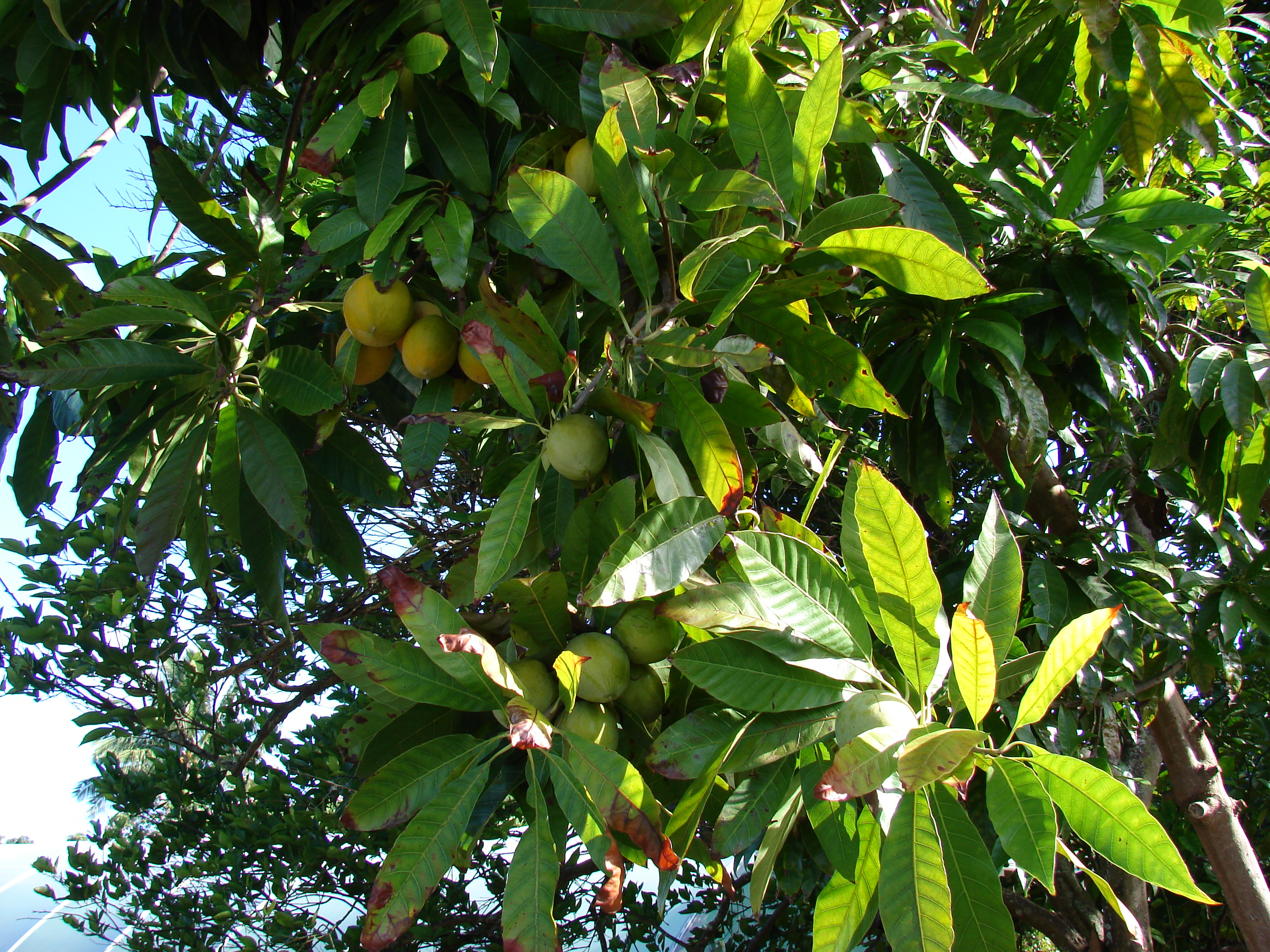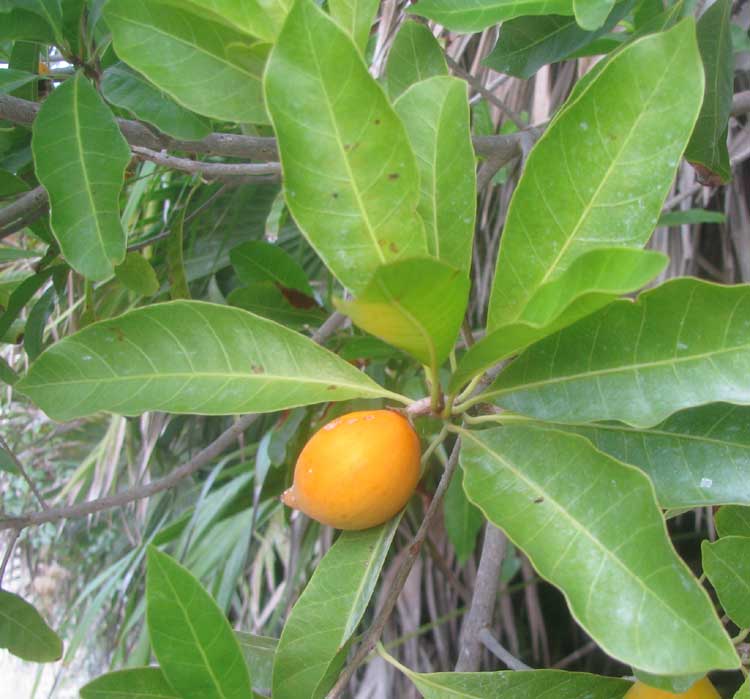Pouteria campechiana
Pouteria campechiana
Pouteria campechiana, also referred to as Canistel, a species is within the family of Sapotengewächse ( Sapotaceae ). It comes from Central America. As a fruit tree it is also cultivated in Asia and Africa. The fruits are eaten raw or processed further.
- 5.1 Literature
- 5.2 Notes and references
Description
Appearance and leaves
Pouteria campechiana is an evergreen tree which forms a height of from 5 to 10, rarely to 20 meters reached and a slender crown. The gray-brown bark is furrowed and along with breach from white latex.
The alternate and crowded arranged at the ends of branches leaves are divided into petiole and leaf blade. The finely hairy petiole is 10 to 25, rarely up to 45 millimeters long. The thinly leathery, simple leaf blade is at a length of 10 to 35 centimeters and a width of 4 to 8 centimeters lanceolate or ovate-lanceolate with upside - long wedge-shaped Spreitenbasis, short tapered end and a smooth margin. Both Spreitenseiten are dark green and shiny.
Flowers and Fruit
The flowers appear singly or in groups in the leaf axils of young branches on 5 to 12 mm long, densely hairy stems. The scented flowers are hermaphrodite double perianth. The five overlapping green sepals are ovate to roundish, with a length from 4.5 to 11 mm and a width of 8-12 mm. The five or six greenish, creamy white or whitish and silky hairy petals are fused into a 5-6, rarely to 8 mm long corolla tube, which ends in five or six Kronlappen.
The at a length of 7.5 to 14 inches and a diameter of 2.5 to 11 centimeters rounded, broadly ovoid or spindle-shaped berries of fruit stem are the starting point indented and often have at the top of a short solid top. The sepals remain at the bottom of the berry. Give Unripe fruits when wounded from a white, strong sticky milky sap. The pericarp of ripe fruit is thin, chewy, orange-yellow, often spotted brown, smooth, matt or slightly shiny. The yolk- yellow flesh is slightly fibrous, mealy, dry and has a sweet, slightly aromatic taste. The one to five seeds are about 6.5 inches long and 2.5 inches wide, flattened ovoid or oval, pointed at one end, glossy red-brown with a broad, white hilum.
Pouteria campechiana blooms and bears fruit all year round.
Occurrence
The natural range of Pouteria campechiana located in southern Mexico, Belize, Guatemala, El Salvador, Costa Rica, Honduras, Nicaragua and Panama. This fruit tree is often cultivated in the West Indies, Central America, Florida, India, Sri Lanka, Indochina and Southeast Asia, rare in East Africa and the Seychelles. Pouteria campechiana grows on poor and shallow soils, in frost-free climate of the tropics and subtropics and is resistant to drought.
System
The type Pouteria campechiana belongs to the genus in the subfamily Pouteria Chrysophylloideae within the family of Sapotengewächse ( Sapotaceae ).
This species was first described by Karl Sigismund Kunth 1819 as Lucuma campechiana ( basionym ). Charles Baehni she put 1942 in the genus Pouteria.
Use
The ripe fruits are eaten as shelled fruit or salted, peppered and sprinkled with lemon juice. The pulp is used in baked goods, puddings, milkshakes, jams and ice cream. The fruits are nutritious, rich in carbohydrates, proteins and vitamins A, B and C.
In Central America, the astringent bark decoction as a remedy used for fever and skin diseases.
Propagation is by seeds, which the trees are grafted graft. Are harvested the fruits, when they have attained a yellow color. They are left to ripen for eating a few days.










